In Zhanjiang, Guangdong province, the southernmost part of China's continent, a green "Great Wall" stretches between the blue sea and the red and brown land, performing as a coastal guard.
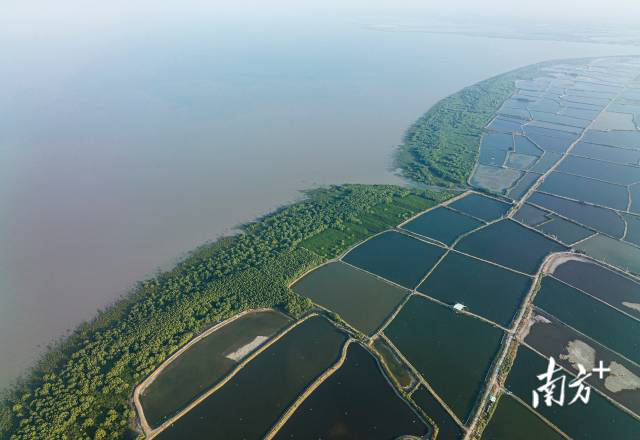
Guangdong Zhanjiang Mangrove National Nature Reserve (Photo: Nanfang Daily)
Guangdong Zhanjiang Mangrove National Nature Reserve, located along the coastline of over 1,500 kilometers of Leizhou Peninsula, has the largest mangrove area in China. A total of 9,960 hectares of mangroves grow here, accounting for 33% of the mangrove area in China and 78% of that in Guangdong.

A flock of egrets hover over a mangrove forest in Lianjiang, Zhanjiang. (Photo: Nanfang Daily)
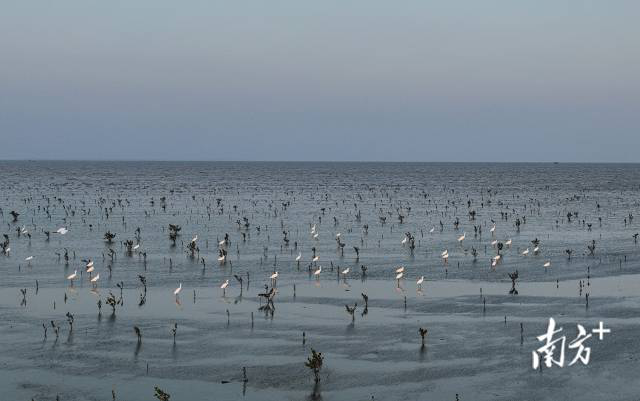
A flock of egrets stand by mangrove saplings as the tide recedes. (Photo: Nanfang Daily)
A mangrove is a shrub or tree that grows in the intertidal zones on tropical and subtropical coast. At high tide, they will be covered by water, leaving only the green canopy visible, and as the tide recedes, they return to a lush forest. Containing a salt filtration system and a complex root system, the mangrove can take root deep into the silt and help fight storms.

Black-headed gulls hover above a mangrove forest in Tujiao Village, Leizhou, Zhanjiang. (Photo: Nanfang Daily)
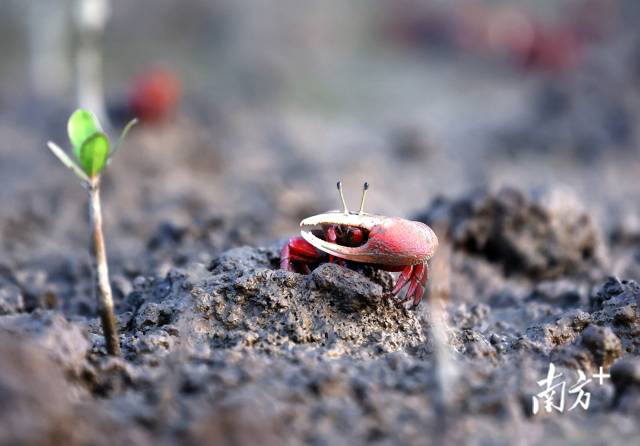
As the tide recedes, fiddler crabs crawl out of their burrows. (Photo: Nanfang Daily)
Techeng Island in Zhanjiang Bay is home to ancient mangrove trees rarely seen in the world, some of which are 500 to 600 years old, and each one looks like a unique natural giant bonsai.


The ancient mangrove trees on the Techeng Island (Photo: Nanfang Daily)
With a complete ecological cycle system, the mangroves shelter a wide variety of fish, shrimp, crabs, shellfish, plankton and birds. In Leizhou's Tujiao Village, fiddler crabs, giant mudskippers, and even spoon-billed sandpipers, a kind of highly endangered bird with only 600 individuals in the world, can be seen on the beach.
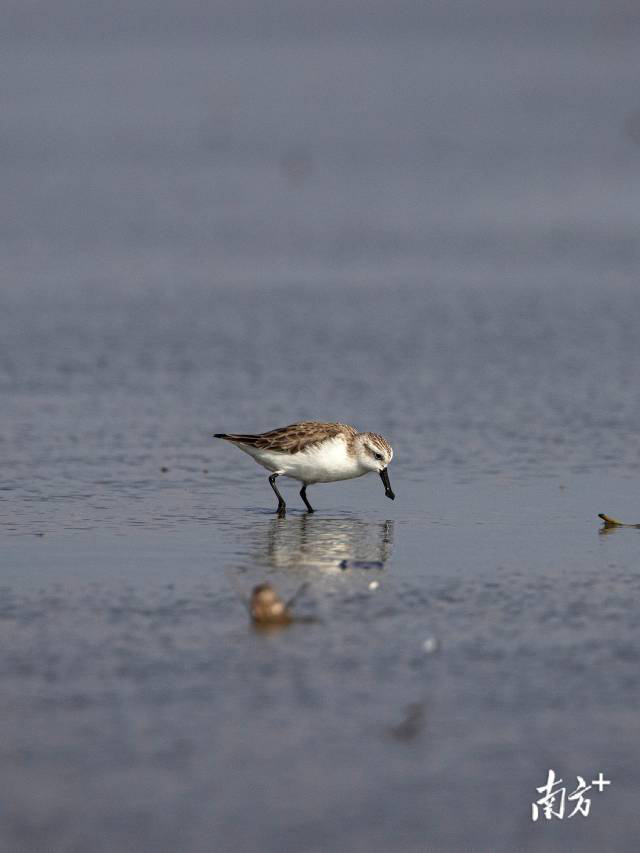
Spoon-billed sandpipers (Photo: Nanfang Daily)
Gaoqiao Mangrove Nature Reserve in Lianjiang is the core area of Guangdong Zhanjiang Mangrove National Nature Reserve. The 800-meter-long mangrove walkway here facilitates the collection of mangrove seedlings and close contact with mangroves for researchers and tourists.

Mangroves have a complete ecological cycle system. (Photo: Nanfang Daily)
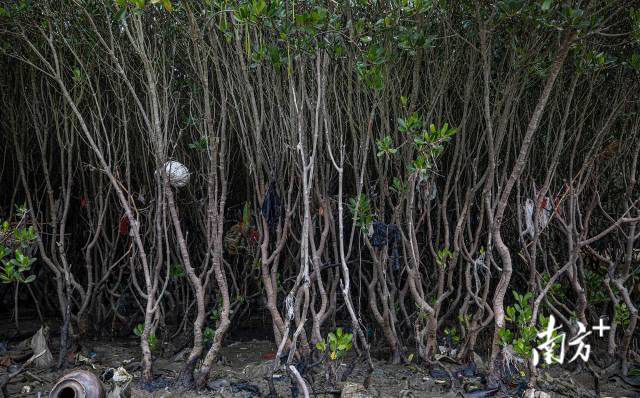
Mangrove has a complex root system. (Photo: Nanfang Daily)
This nature reserve is home to 159 species of algae and 97 species of phytoplankton, providing habitats for more than 170 kinds of birds including both resident and migratory ones.
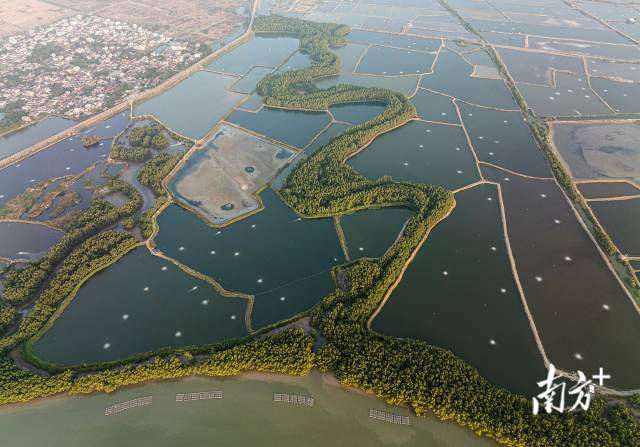
The mangrove forest in Tujiao Village, Leizhou, Zhanjiang (Photo: Nanfang Daily)
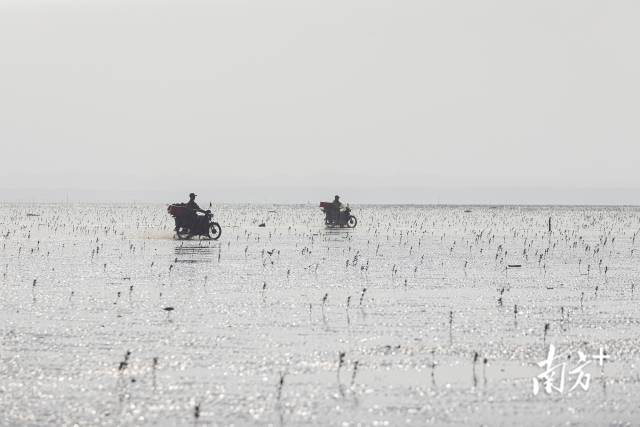
As the tide recedes, people come to the beach to pick up marine products. (Photo: Nanfang Daily)
As an important blue carbon ecosystem, mangroves play an important role in carbon sequestration, carbon storage, climate change response and biodiversity maintenance. On June 8, 2021, Guangdong Zhanjiang Mangrove National Nature Reserve Administration, the Third Institute of Oceanography, and SEE Foundation signed the first carbon emission reduction transfer agreement of 5,880 tons of "Zhanjiang Mangrove Afforestation Project", marking the official completion of China's first "blue carbon" trading project.
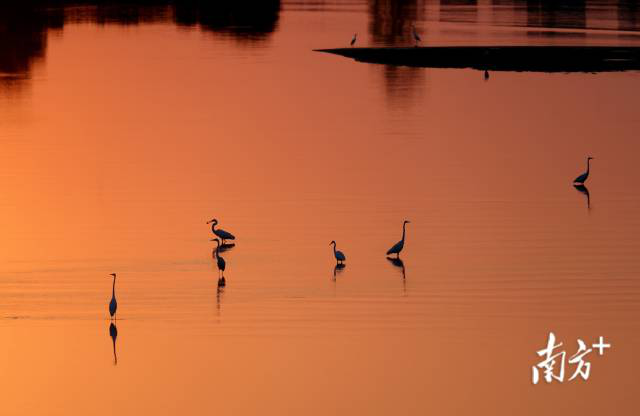
Egrets stand in the shallows near the mangroves in Lianjiang, Zhanjiang. (Photo: Nanfang Daily)
By 2025, Zhanjiang plans to plant 2,813 hectares of mangroves and restore 1,370 hectares of existing mangrove forest, making itself a "mangrove city".

In Gaoqiao Mangrove Nature Reserve, rivers crisscross the mangroves like silver ribbons. (Photo: Nanfang Daily)
Author: Holly
Video: Zhang Youqiong, Yao Zhihao, Wu Ming, Yao Zhihao, Holly
Editor: Monica, Jerry
















